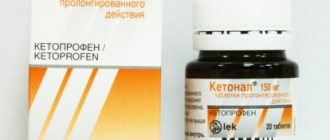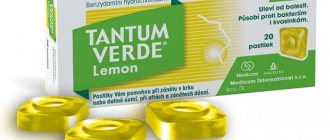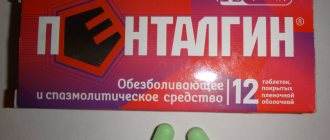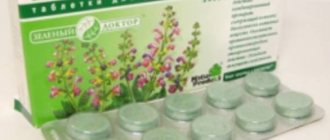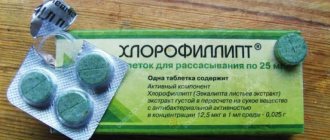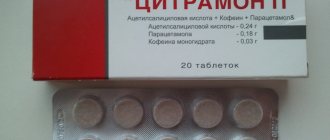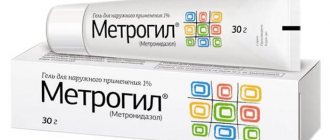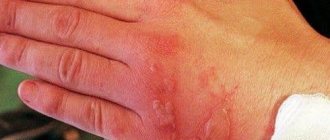Indications for use of Nimesil
The drug is prescribed to eliminate symptomatic manifestations, which implies relief of the inflammatory process and pain syndrome in various diseases:
- The product perfectly relieves unpleasant symptoms of inflammation
problems with blood vessels (arthritis, osteoarthritis);
- musculoskeletal system (rheumatism, radiculitis, bursitis);
- urological and gynecological diseases.
The product perfectly relieves unpleasant symptoms of inflammation that occurs after surgery or injury.
Restores performance and comfort during menstruation, eliminates headaches and toothaches.
Nimesil is used to suppress severe pain, as well as during a long course of therapy, but not exceeding 2 weeks. After this period, the drug is, if necessary, replaced with another one that has the same pharmacological effects.
What is nimesil?
Nimesil is a remedy that helps reduce inflammation, relieves pain and effectively reduces high body temperature.
This drug is non-steroidal, that is, non-hormonal, and is produced in the form of an injection solution, tablets, gel for external use, as well as powder with granules, from which a drinking suspension is prepared. The principle of action of the drug Nimesil is that it blocks an enzyme that contributes to the development of the inflammatory process, accompanied by swelling, pain, and increased body temperature. Moreover, such a remedy has no effect at all on the other fraction of this enzyme, which is responsible for the stomach’s production of a protective reaction against hydrochloric acid.
How to dilute the powder?
For adults, the drug should be taken after meals in 2 divided doses (morning and evening). To prepare the suspension, you need to take a glass with 100 ml of water and dilute a bag of powder with it.
To better dissolve the granules, it is recommended to use a teaspoon. The water should be boiled and warm, this will help dissolve Nimesil powder faster.
The diluted medicine should not be stored until the next dose, as the properties of the active substance are lost.
To prepare the suspension, you need to take a glass with 100 ml of water and dilute a bag of powder with it.
How many days can you take Nimesil powder?
The daily norm includes 2 doses of powder, one sachet each
The regimen for taking Nimesil is prescribed by a doctor. However, using painkillers for more than 15 days is not recommended.
The daily norm includes 2 doses of powder, one sachet each.
The interval should be 8-12 hours, but can be reduced to 7-8 hours. The duration of action of the active substance is 6 hours.
4 hours after consuming the suspension, the maximum amount of the drug seeps into the blood, after which the level gradually decreases.
Cleansing the body of nimesulide occurs naturally (partially through the kidneys).
An overdose is recognized by the following signs:
- nausea;
- vomit;
- drowsiness;
- physical weakness;
- apathy;
- bleeding in the stomach or intestines.
To neutralize the effect of the active substance on the body, it is recommended to lavage the stomach and take activated charcoal.
II. moderate strength diuretics[edit | edit code]
benzothia diazine derivatives (thiazide diuretics) - dichlorothiazide, polythiazide;
Dichlorothiazide (Dichlothiazidum; in a tablet of 0.025). Well absorbed from the gastrointestinal tract. The diuretic effect develops after 30-60 minutes, reaches a maximum after two hours and lasts 6-10 hours. Drugs in this group reduce the active reabsorption of chlorine, respectively, the passive reabsorption of sodium and water in a wide part of the ascending part of the loop of Henle.
Among all diuretics, thiazides have the most pronounced kaliuretic effect, as well as a decrease in sodium content in the vascular wall, which reduces the vasoconstrictor reactions of biologically active substances. Dichlorothiazide also potentiates the effect of antihypertensive drugs used concomitantly with it. This drug reduces diuresis and thirst in diabetes insipidus, while reducing the increased osmotic pressure of blood plasma.
We invite you to familiarize yourself with the removal of wisdom teeth: when is it necessary, how is it removed and what to do after removing the figure eight?
Advantages of thiazide diuretics:
- Sufficient action activity;
- They act quite quickly (within 1 hour);
- They act for quite a long time (up to 10-12 hours);
- Do not cause pronounced changes in the acid-base state.
Disadvantages of thiazide diuretics:
- Since drugs in this group act predominantly in the distal tubules, they are more likely to cause hypokalemia. For the same reason, hypomagnesemia develops, and magnesium ions are necessary for the entry of potassium into the cell.
- The use of thiazides leads to retention of uric acid salts in the body, which can provoke arthralgia in a patient with gout.
- The drugs increase blood sugar levels, which can lead to an exacerbation of the disease in patients with diabetes mellitus.
- Dyspeptic disorders (nausea, vomiting, diarrhea, weakness).
- A rare but dangerous complication is the development of pancreatitis and damage to the central nervous system.
Indications for use:
- It is most widely used for chronic edema associated with chronic heart failure, liver cirrhosis, and kidney pathology (nephrotic syndrome).
- In the complex treatment of patients with hypertension.
- For glaucoma.
- With diabetes insipidus (the volume of circulating blood decreases, therefore, the feeling of thirst decreases).
- For idiopathic calciuria and oxalate stones.
- With edematous syndrome of newborns.
How to take it for children?
Nimesil is not prescribed to children whose age has not reached the 12-year mark. Adolescents (12-18 years old) take the usual dose (200 mg per day).
Elderly
Elderly people should first consult with a specialist to determine the daily dosage; it is usually less than what is indicated in the instructions.
The doctor also takes into account the possibility of combining the drug with other pharmacological agents previously prescribed to the patient.
During pregnancy
Taking Nimesil while pregnant and breastfeeding is prohibited. If pregnancy is detected, treatment with this drug should be stopped. Adjustments to therapy are made exclusively by the doctor who monitors the treatment process.
The use of the drug is restricted due to its effect on the circulatory system, which can cause bleeding during pregnancy.
Combinations with other drugs
The combination of Nimesil with certain types of medications can cause side effects with abdominal pain and discomfort. When combined with alcohol, hepatotoxicity increases, which can lead to irreversible consequences for the liver, especially in the case of existing organ pathology.
Here are some combinations with Nimesil that are not advisable:
- with glucocorticosteroids - the likelihood of damage to the gastrointestinal tract, bleeding and the formation of ulcers increases;
- with anticoagulants the effect of the latter may be enhanced;
- with diuretics, on the contrary, their effect is weakened, etc.
You should not take Nimesil for abdominal pain until the cause of the ailment is determined . When using this medicine for treatment, you may encounter a situation in which discomfort and pain in the abdomen may occur as a result of taking Nimesil itself. In this regard, self-medication, especially in relation to unexplained abdominal pain, is not advisable.
Instructions for use for toothache
After stirring until the composition is completely dissolved, the suspension is drunk in leisurely sips.
The active substance of the suspension prepared from Nimesil powder is quickly absorbed into the gastric mucosa, which gives a quick analgesic effect (about 20 minutes).
To dissolve, you will need 1 sachet of the drug and a glass with 100 ml of water.
After stirring until the composition is completely dissolved, the suspension is drunk in leisurely sips.
It is better to postpone taking the medicine after meals (not earlier than 40-60 minutes). If the pain returns, take a second dose only after 12 hours.
A shortened interval or increased dosage will negatively affect health, and it will not be possible to obtain the desired effect.
Nimesil helps not only to dull the pain syndrome, but also, if necessary, to lower the temperature and stop the inflammatory process. But even if the pain goes away completely due to dental problems, you should not postpone your visit to the clinic.
The drug has an effect limited to antipyretic, analgesic and anti-inflammatory effects. Nimesil does not treat diseases of the teeth and gums.
Important:
- Nimesil powder should be dissolved in filtered tap water or bottled drinking water from the store.
- Before using the drug, adults and children should read the instructions on this page.
- The prepared solution should not be left unused for too long, otherwise the powder will precipitate.
- Nimesil should not be brewed with boiling water. Just dilute the powder in regular drinking water at room temperature.
I. powerful, or potent (“ceiling”) diuretics[edit | edit code]
Torasemidum (solution 5 mg/ml in amp. 4 ml in tablet 5-10 mg:)) is a loop diuretic. Maximum effect within the first two hours, the effect lasts up to 18 hours. Normalizes electrolyte imbalances. Torsemide has a long half-life, reduces the synthesis of thromboxane, thereby ensuring the prevention of vasospasm; does not affect the excretion of K, Mg, Ca. At a dose of 2.5 mg-5 mg it is used as an antihypertensive drug.
Diuver (torasemide) is available in 5 mg or 10 mg tablets. The main mechanism of action of the drug is due to the reversible binding of torasemide to the sodium/chlorine/potassium ion contransporter located in the apical membrane of the thick segment of the ascending limb of the loop of Henle, as a result of which the reabsorption of sodium ions is reduced or completely inhibited and the osmotic pressure of intracellular fluid and water reabsorption are reduced. Blocks myocardial aldosterone receptors, reduces fibrosis and improves myocardial diastolic function.
Torasemide causes hypokalemia to a lesser extent than furosemide, but it is more active and its action is longer lasting. The use of torasemide is the most reasonable choice for long-term therapy.
Indications for use of the drug:
1. Edema syndrome of various origins, including chronic heart failure, diseases of the liver, lungs and kidneys.
2. Arterial hypertension.
After oral administration, torasemide is quickly and almost completely absorbed into the gastrointestinal tract. Bioavailability is 80-90% with minor individual variations. The diuretic effect of the drug lasts up to 18 hours, which facilitates the tolerability of therapy due to the absence of very frequent urination in the first hours after taking the drug orally, which limits the activity of patients.
Furosemidum (Furosemidum; in tablets of 0.04; 1% solution in amp. 2 ml) - is considered a loop diuretic, since the diuretic effect is associated with inhibition of the reabsorption of sodium and chloride ions throughout the loop of Henle, especially in the ascending her department. Recently, it has been used less and less due to a number of side effects - rebound syndrome, hypokalemia, alkalosis, osteoporosis.
Ethacrynic acid (uregit; Acidum etacrinicum; Uregit; in tablets 0.05; 0.1).
Drugs in this group inhibit sodium reabsorption by 10-20%, therefore they are powerful, short-acting diuretics. The pharmacological effect of both drugs is almost the same. The mechanism of action of furosemide is associated with the fact that it significantly increases renal blood flow (by increasing the synthesis of prostaglandins in the kidneys).
When taken orally, the effect occurs within an hour, and the duration of action is 4-8 hours. When administered intravenously, the diuretic effect occurs within 3-5 minutes (IM after 10-15 minutes), reaching a maximum after 30 minutes. In general, the effect lasts about 1.5-3 hours.
Side effects:
One of the most common adverse reactions is hypokalemia, which is accompanied by weakness of all muscles, anorexia, constipation and heart rhythm disturbances. This is also facilitated by the development of hypochloremic alkalosis, although this effect is not particularly significant, since the effect of these drugs does not depend on the reaction of the environment.
Contraindications
Before using the drug Nimesil, you must familiarize yourself with the existing contraindications so as not to worsen your health.
Restrictions apply to the following health problems:
- Disturbances in the digestive system are a contraindication to the use of Nimesil
high blood pressure;
- the presence of erosions and ulcers in the gastrointestinal tract;
- disorders in the digestive system (heartburn, diarrhea, nausea, vomiting, etc.);
- internal bleeding;
- diabetes mellitus (type 2);
- impaired kidney function;
- heart failure;
- allergy to one of the components of the drug.
Nimesil should not be used during pregnancy and breastfeeding.
This group of drugs is also contraindicated for children under 12 years of age.
Is it allowed for stomach problems and why?
The question of whether it is possible to use Nimesil when your stomach hurts is asked quite often at doctor’s appointments. Although the medication has an analgesic effect, the instructions for its use do not include indications such as stomach pain. Therefore, only a specialized physician can determine the advisability of using Nimesil to relieve pain discomfort in the gastrointestinal tract. Otherwise, the medicine will only worsen the course of the disease and increase the risk of developing undesirable effects from the digestive system. These include the following symptoms:
While taking the drug, the patient may experience nausea.
- nausea and vomiting syndrome;
- frequent loose stools;
- excessive accumulation of gases in the intestines and bloating;
- painful sensations in the abdomen;
- bleeding from the gastrointestinal tract;
- ulcerative lesions of the digestive mucosa;
- gastropathy.
If the doctor has decided to take Nimesil, then patients whose stomach pain is caused by an ulcer should begin therapy with the lowest doses, while simultaneously monitoring their condition. If even the slightest undesirable effects are noted, treatment is stopped immediately. According to the instructions, Nimesil is taken twice a day, 100 mg of the drug. It is better not to take it before meals; doctors recommend taking it after a meal, dissolving the suspension in 100 ml of boiled water. Drink the finished medicine immediately; it is not advisable to store it. The duration of the treatment course with Nimesil should not exceed 15 days.
Side effects
During testing of the drug, cases of side effects were identified.
Among the main ones:
- People whose work requires special attention and composure should be careful when using the drug
distortion of vision clarity;
- circulatory disorders (jumps in blood pressure, hot flashes, rapid heartbeat);
- disorders of the nervous system (dizziness, headache, insomnia, destabilization of the psycho-emotional background);
- allergies (rash, sweating, erythema, anaphylactoid reactions, dermatitis, Lyell's syndrome, Steven-Johnson syndrome, angioedema);
- changes in the hematopoietic system;
- problems with the digestive tract (nausea, vomiting, diarrhea, increased levels of liver enzymes, etc.);
- shortness of breath, asthmatic attacks;
- kidney problems (interstitial nephritis, weak urination, etc.);
- physical weakness, decreased body temperature.
Cases of accumulation of water in the body, the formation of swelling (local/systemic), as well as hemorrhages in the skin (point/superficial) are considered extremely rare.
People whose work requires special attention and composure should be careful when using the drug. The manufacturer does not indicate the effect of Nimesil on consciousness, but other drugs in this group cause drowsiness and slow down the reaction.
To avoid side effects, it is recommended to follow the indicated dose of Nimesil and use it for short courses of treatment.
Leshchinsky powder: diuretic composition and how diuretics are used
Diuretic tablets are taken by patients for more intensive fluid removal against the background of increased urine production by the kidneys.
Diuretics relieve swelling in any place, which often accompanies heart and kidney failure, as well as arterial hypertension.
Doctors often prescribe the most powerful drug, Leshchinsky powder, the diuretic composition of which helps patients even in the most severe cases.
When are diuretic tablets needed?
All diuretics remove excess fluid, salt and excess sodium from the body, which accumulates in the tissues. This is achieved by increasing the production of urine by the kidneys.
At the same time, sodium is washed out, which interferes with normal pressure and narrows the lumens in the blood vessels.
Diuretics for high blood pressure and kidney problems help not only remove swelling, but also improve the functioning of the genitourinary system.
Loading …
Medicines are prescribed by doctors for the following indications:
- nephrotic syndrome;
- heart muscle failure;
- metabolic failure;
- presence of diabetes mellitus;
- high blood pressure;
- osteoporosis.
Diuretics are prescribed as a conservative treatment for pathologies of the heart and kidneys, problems with veins, diabetes mellitus, hypertension, diseases of allergic and infectious etiology.
By eliminating swelling of the extremities, diuretics can not only remove excess fluid, but also restore the level of acid-base balance, which is often used by sports doctors, as well as in clinical practice for intoxication of the whole body.
What types of diuretics are there?
Existing diuretics are divided into large groups, which differ in their principle of action and active substance. These are thiazide, loop, potassium-sparing and sulfonamide.
Loop
Loop-type drugs include Bumetanide, Lasix, Furosemide and Torsemide. The effect is the maximum of all diuretics, since it is aimed specifically at renal filtration.
Used as an emergency aid for multiple edema. The effect of the product is not very lasting, only about 6 hours. With urine, the body loses potassium and magnesium, which has a bad effect on the heart muscle.
The maximum effect of drugs in this group is observed in renal failure; they do not increase blood glucose and cholesterol. The disadvantage is that there are many side effects, due to which it can be taken for an extremely short period of time.
Thiazide
These diuretics have a good effect on the patient's condition with severe hypertension. The most well-known drugs in this group are Ezidrex, Arifon, Oxodalin, Hypothiazide and Indapamide.
They are prescribed by doctors as a complex treatment, and violating the dosage is extremely dangerous. When taken correctly, they can reduce magnesium and potassium levels and restore the balance of uric acid and glucose in the blood.
Prevents the loss of sodium ions.
More on the topic: Is Phytolysin a diuretic?
Drugs in this group are taken for edema anywhere in the body due to hypertension and heart and kidney failure, liver cirrhosis. The active substance is absorbed half an hour after administration, and the effect lasts up to 12 hours.
Potassium-sparing
Along with the thiazide group, potassium-sparing diuretics act directly on the kidneys, in particular on their distal tubules. The most popular diuretics of this type are Triamterene, Verospilactone, Amiloride, Spironolanktone and Eplerenone. There is also a difference - the effect is incomparably weaker and develops very slowly, within several days after the first dose.
These medications are only applicable as complex therapy during treatment with thiazide diuretics to prevent the excretion of potassium in urine. Doctors often prescribe just such a regimen for the treatment of patients with diabetes mellitus and gout, myocarditis and cirrhosis of the liver, and severe edema.
Sulfonamide diuretics
The effect of diuretic drugs of this group accumulates within 13-15 days from the start of treatment, the peak is reached only after 50-60 days.
From a pharmacological point of view, this group is close to the thiazide category and is also applicable for high blood pressure.
Sulfonamide diuretics should be used with extreme caution in case of disruptions in water-electrolyte metabolism and pathologies in the renal system.
Medicines in this group cause a lot of side effects, as well as complications from the digestive tract, nervous system and cardiovascular system. These include Inap, Lorvas, Indapamide, Arifon and Tenzar. Diacarb, which is a carbonic anhydrase inhibitor, is just as often prescribed.
Diuretics are taken for a very short time, with caution regarding the acid-base balance of urine. The effectiveness of Diakarb has been clinically proven in the treatment of edema from pulmonary and heart failure in chronic forms.
Contraindications to taking diuretics
The main contraindications for which it is strictly forbidden to take loop-type diuretics are kidney disease with developmental complications, problems with electrolytes in the body, pancreatitis and gout, as well as hypotension.
Thiazides have their own contraindications, including gout, high rates of diabetes mellitus, acute liver cirrhosis, and a lack of potassium in the body.
Potassium-sparing diuretics should not be taken if there is hyperkalemia, as well as hypercalcemia. Patients with renal failure are strictly prohibited from taking this group, as is the case in cases of sodium deficiency and acidosis.
More on the topic: Is Eufillin a diuretic?
The most popular diuretic tablets
The pharmacy chain has a lot of diuretic drugs that are quite affordable and can be bought in some cases even without a doctor’s prescription. But the use of such drugs should be carried out exclusively under the supervision of the attending physician, urologist or nephrologist, as well as the leading therapist. Let's take a closer look at the most famous diuretics.
Furosemide
A strong diuretic used as a first aid in emergency cases to reduce high blood pressure and remove excess fluid from the body. The action begins after 30 minutes and lasts for 6 hours. Efficiency has been proven in hypertensive crises, pulmonary and cardiac edema.
It alleviates the condition of a pregnant woman with toxicosis in the last trimester of pregnancy. In the early stages it is strictly prohibited. The drug relieves the load on the heart, reduces blood pressure, and removes excess fluid in pathologies of the liver and kidneys. The disadvantage of Furosemide is a strong withdrawal of potassium, salts, magnesium and an imbalance of electrolytes.
Hypothiazide
Moderately expressed diuretic drug of the thiazide group. The action begins about an hour after taking the tablet and lasts about 12 hours, which depends on the severity of the swelling and kidney function.
The gentleness of action and such a long-lasting effect of the medicine make it indispensable in the fight against hypertension, edema, gestosis in pregnant women, and reducing pressure inside the eye. It should not be used for a long time so as not to lose too many potassium ions. When treating the heart, it is forbidden to take this medicine together with drugs against arrhythmia.
Veroshpiron (Spirolankton)
Potassium-sparing agent with a mild effect on the body. When removing edema, there is no loss of potassium and no complications, the effect lasts about 2 days, but can be longer, for a couple of days after stopping Veroshpiron.
It is used very rarely as an independent remedy; more often it is taken as a supplement with other groups, so as not to lose magnesium and potassium. Proven effectiveness in renal and heart failure, cirrhosis and nephrosis, hypertension. In the last stage of pregnancy, it reduces the swelling of a woman.
Indapamide
This diuretic medicine has a moderate antihypertensive effect. Acting on the tissues and blood vessels in the kidneys, it activates the synthesis of magnesium and potassium, which improves heart function and produces more urine in the renal system. The effect lasts a day after administration, effectively relieves swelling and reduces cardiac stress.
An important point when taking this medicine is its gentle effect on the kidneys, which does not reduce their functionality. It is prohibited to take Indapamide if you have problems with cerebral circulation, lactation and pregnancy, kidney and liver pathologies, anuria and hypokalemia.
More on the topic: Is Enap a diuretic?
Triamterene
The weak antihypertensive Triamterene is effective for any edema and high blood pressure, as well as for incipient liver cirrhosis. The peak diuretic effect is detected 2 hours after drinking the tablet and lasts up to 12 hours after. Triamterene can be taken even by children, and adults are allowed to take it for a long time. It is forbidden to violate the dosage, since it can cause dyspepsia and hyponatremia.
Torasemide
The loop diuretic Torasemide has a rapid effect of removing urine from the body. An hour after administration, patients notice the most significant fluid outflow, and the effect can last up to 18 hours after, making the administration easy and not causing discomfort.
The medicine perfectly reduces blood pressure, eliminates swelling due to pathologies in the liver and heart, as well as in the kidneys. It is forbidden to take Torasemide during pregnancy and breastfeeding, with vascular disorders, as well as low blood pressure and arrhythmia.
Leszczynski powder
A diuretic with a very high degree of impact on the urinary system is used by doctors when emergency conditions occur, severe swelling and the impossibility of using another treatment regimen.
Leshchinsky powder, the diuretic composition of which is determined by the components, is taken three times a week until the condition improves.
When the patient takes this drug, it is necessary to stop taking Diuver and Veroshpiron due to incompatibility of the drugs.
Complex preparation requires the participation of specialists, so a doctor’s prescription and a pharmacy laboratory are needed. Leshchinsky's powder contains 250 mg of Diacarb, 50 mg of Hypothiazide, 80 mg of Furosemide and 0.15 g of aminophylline.
This multi-component powder perfectly copes with the task of removing fluid from the body, reduces blood pressure and eliminates swelling.
According to patient reviews, in some cases there is slight discomfort during administration and the act of deurination.
responded with an error: Daily Limit Exceeded. The quota will be reset at midnight Pacific Time (PT). You may monitor your quota usage and adjust limits in the API Console: https://console.developers.google.com/apis/api/.googleapis.com/quotas?project=122068193747
Rate this post: Loading…
Source: https://onefr.ru/lechenie/lekarstva/mochegonnyj-sostav-poroshka-leshhinskogo.html
Analogues and prices
The table shows analogues of Nimesil and their prices:
| What can replace the drug Nimesil? | |
| Name | Price, rubles |
| Nimesulide (Israel) | 198 |
| Nise (India) | 195 |
| Nemulex | 221 |
| Nimika (India) | 243 |
| Nimesan (India) | 168 |
| Nimulid (India) | 265 |
Nise
Nemulex
Nimesan
Nimesulide
Nimika
Nimulid
Before using the analogue, you should consult your doctor to exclude side effects.

